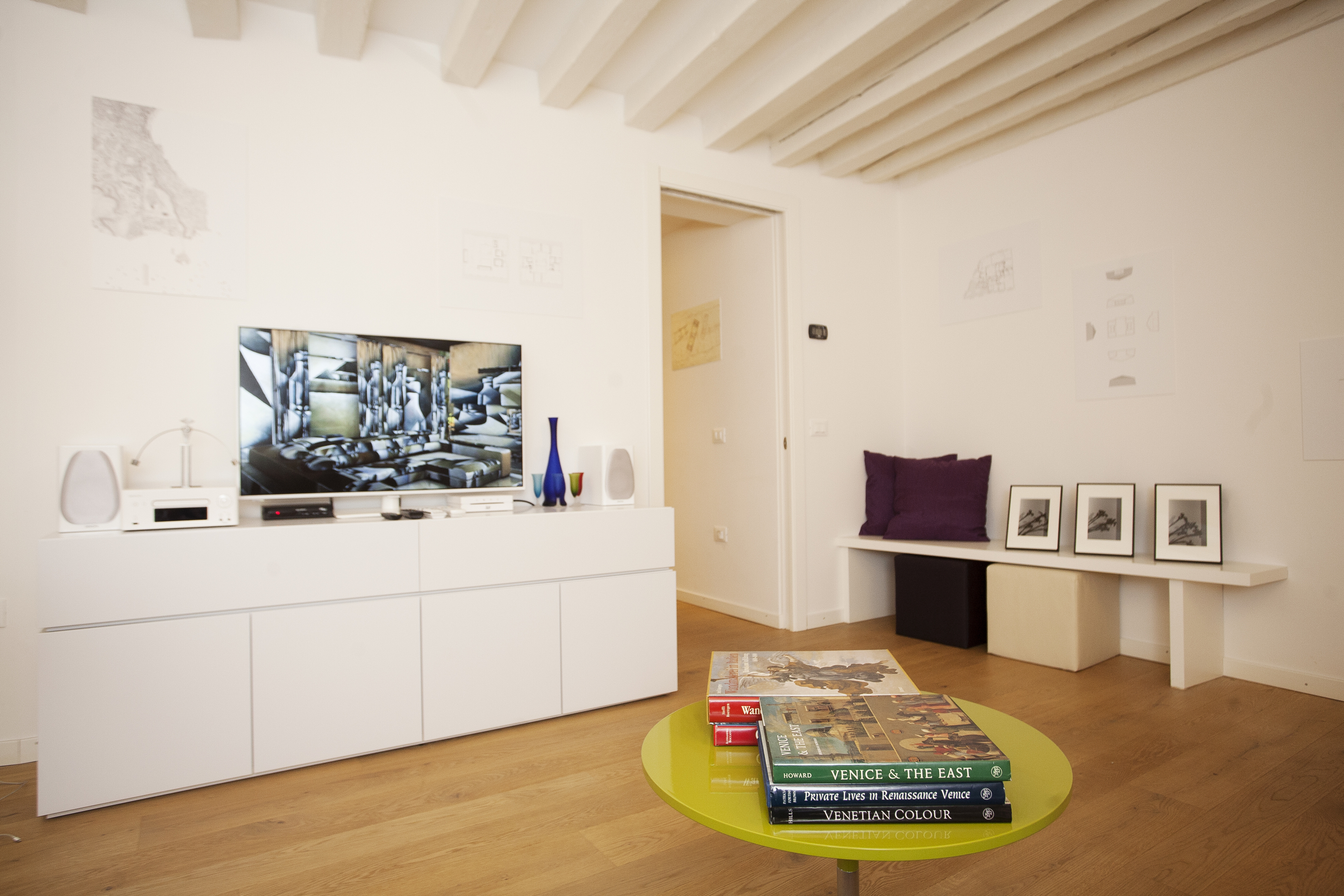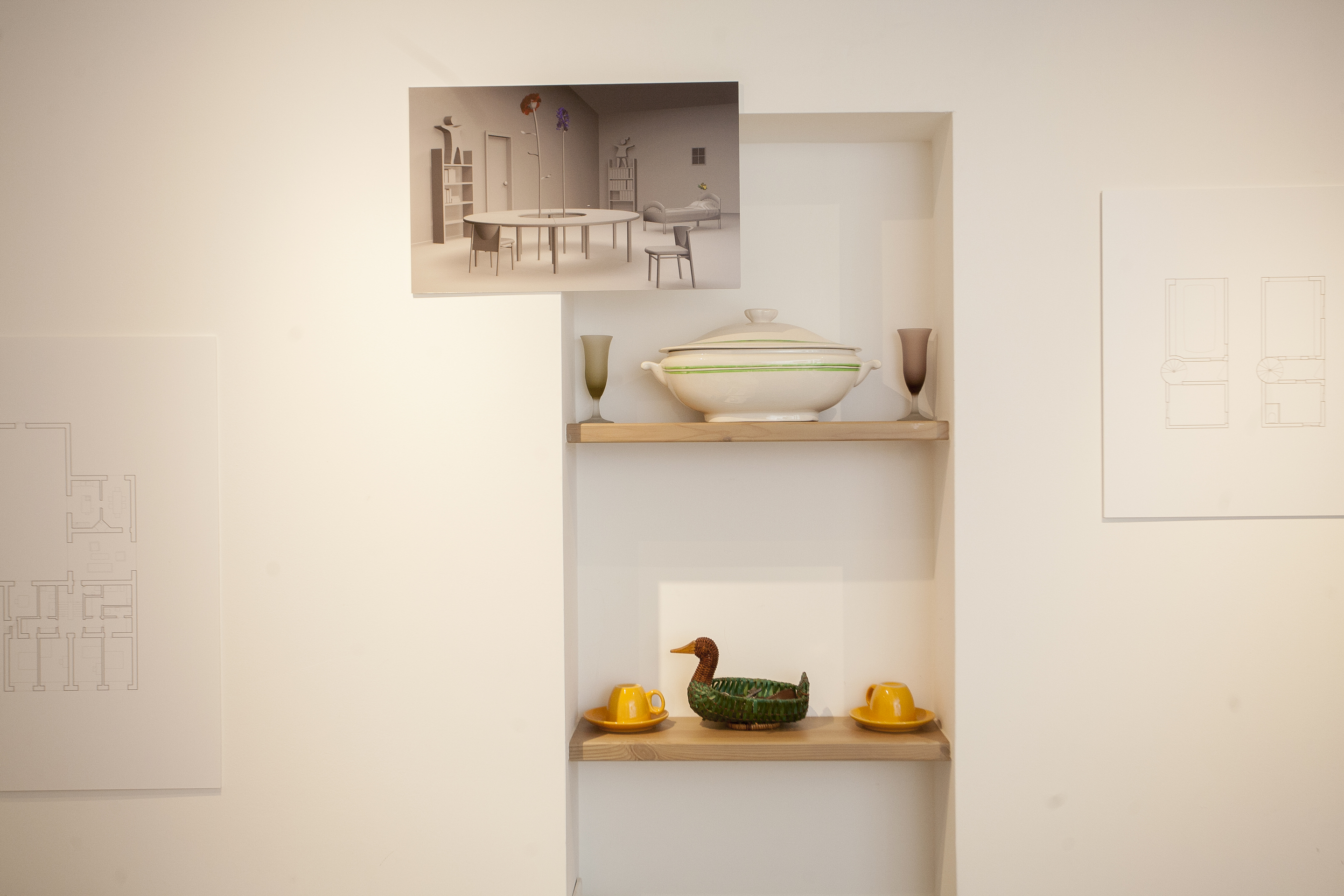Left to right: Bava and Sons, Coast.biz; Jon Rafman, Juan Gris Dream House; Charles Broskoski, Untitled (Iris); David Kohn architects, Carrer Avinyo; Etienne Descloux, Visitez ma tente. Photograph by Noah Rabinowitz.
If Google had a pavilion at the Venice Biennale, who would they exhibit? How would their installation compete against the Artsy auction exhibition? Would a Young Incorporated Artist feel more comfortable representing Tumblr or the USA?
Biennales have long been recognised as vehicles of internationalization and globalization in the worlds of art and architecture. Founded in 1895, with its younger sibling the Architecture Biennale following in 1980, the Venice Biennale is perhaps the most well known of its ilk. Although structured around a thematic exhibition in the imperially-named Arsenale, a significant attraction is inevitably the soft state play that occurs between the national pavilions. But in a world where the certitude of nation states is increasingly coming up against a new dominance of multi-national business, it is perhaps surprising that outright corporate pavilions aren't more of a Biennale mainstay, beyond the aggressive sponsor interests that keep national pavilions afloat.
It is in these international waters that the organizers of the (insistently unofficial) AIRBNB Pavilion positioned their project during the opening weekend of this year's 14th International Architecture Exhibition. Programmed by four graduates of the Architectural Association School of Architecture in London–Alessandro Bava, Octave Perrault, Fabrizio Ballabio and Luis Ortega Govela–this "pavilion" consisted of three concurrent exhibitions held in rented Airbnb apartments across the city. These showed works by a large cast of international architects and artists, including Jon Rafman, Marlie Mul, Hayley Silverman and Some Women (Morag Keil) on the artist side, and m-a-u-s-e-r, Unu La Unu and Raphael Zuber amongst the architects. Most architects contributed drawings of built or under construction housing projects, whilst the artists were asked to produce imagined interiors, a winking indictment of the role of the artist in contemporary economies. These were mostly printed digitally, for ease of install, tacked like provisional building site notices in bathrooms and by bookshelves, although some artists chose to spill out into mini installation, with Martti Kalliala and Jenna Sutela producing a unique printed curtain for the main bedroom, and Ilya Smirnov sending a stuffed bird via Amazon Prime to accompany his somewhat abstract CAD sketch. The classical soundtrack for Rafman's video of his Jean Gris Dream House (2013)–which included Léo Delibes's "The Flower Duet" sequence from Lakmé, recently used in British Airways adverts–could be heard throughout the apartment.
Left to right: Unu La Unu, House with an outside room; Jasper Spicero, Untitled; Go Hasegawa, House in Gotanda. Photograph by Noah Rabinowitz.
Only open for three days, the pavilion bought into a franchise that is increasingly popular amongst young artists and curators: find a temporary space, install artworks, document, distribute widely and then move on. This was fitting to the context, but was nonetheless also affecting. The architectural sketches, often presenting dramatic alterations of the domestic setting, became strangely elegiac when set in the interchangeable apartments of the global Airbnb city. Inside the apartments, and away from Venice's constant press scrum and picture postcards, you might get the sense you could be anywhere. As the curators detail in an excellent text produced with the architecture weekly Fulcrum for the exhibition: "it is finally certain that people adapt to architecture more than architecture adapts to life."

Left to right: Marlie Mul, Untitled; Stewart Uoo, Confessions; m-a-u-s-e-r, Top 13 Favourite Homes Worldwide. Photograph by Noah Rabinowitz.
Similarly, the visual art felt poised between critical intervention and somehow the obvious thing to encounter in someone else's apartment. Stewart Uoo's video Confessions (2013) was playing on loop on a Macbook Pro left open on a bed–I swear just like my own room when I left it three days ago. A rendering of a clean white-windowed cell by Olivia Erlanger was hung as backdrop to a jacuzzi. The 20th century desire for art to be incorporated into life has left art almost lifelessly comfortable within the products of Apple Incorporated. Most anarchic was Adam Cruces, who managed to come and draw in shaving foam on the mirror. The visual art of course sat perfectly in the context, working through clever quips on real and imagined visions of space. The unaddressed curatorial question was to what extent it might problematise the context.
In fact, this is the question raised by the pavilion more generally: how does an exhibition, such as this, reproduce pre-existing conditions of production, or of life, and to what extent can they challenge or castigate them? At what point does complicity turn into compliance?
The "sharing economy" turns everything in your life into monetizable assets, "democratizing" access to them even as it imposes new social and technological firewalls on the city and domestic space. At the same time it dismantles any worker solidarity through appealing directly to the entrepreneur-as-individual. These are invisible class vectors that will be no stranger to anyone in the art industry. Next time you're at an opening and you find the work boring, consider that these emergent capital formations are what you're looking at as much as anything. The AIRBNB curators were on top of this, and what's more managed to redistribute this as image back into the network that produced it. Perhaps you should rent out one of your museum rooms to them at your next biennial?



